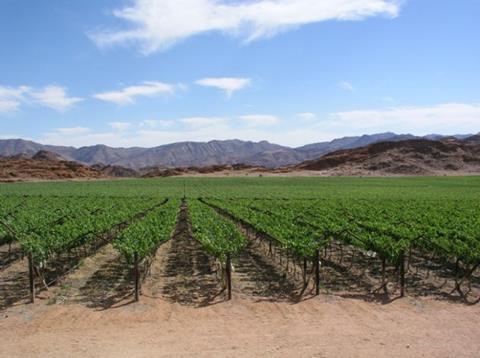
South Africa’s new protocol for table grape exports to China will remove risk from direct shipments, enabling the industry to land product in peak condition and to develop the market for seedless varieties.
That’s the view of key Asia market managers with some of South Africa’s leading export companies.
Under the new protocol, which will be implemented immediately and in time for the 2016/17 season, the fruit must undergo cold treatment at +0.8oc for 20 days. This represents a significant improvement on the previous protocol, which called for treatment at -0.6oC for 22 days, and was loaded with risk.
Rod Hill, import manager with Chinese importer-distributor Joy Wing Mau, which is part owned by Capespan, said the previous protocol was “extremely harsh on the fruit”, and engendered two key challenges.
“The first issue was it was extremely difficult to maintain, leading to frequent cold sterilisation failures. The maintenance of temperatures was critical between the cold sterilisation and cold damage to the fruit,” he said.
“The second issue was that the pre-cooling to get the fruit to the required temperature and the voyage at this temperature (-0.6oC) had a detrimental impact on quality, with dehydrated stems and potential cold freeze damage affecting arrival quality and prices. As a result, many growers were not prepared to take the risk and ship fruit to China.”
The relaxed protocol now removes most of the risk of shipping, Hill said. “It’s a process that South Africa has followed for shipments to Europe for many years, and the most important thing is the fruit will now arrive in good condition.
“Commercially, the industry must be careful to avoid over-shipment but it will allow South African grapes to compete on arrival quality with Southern Hemisphere competition and the Chinese consumer will receive grapes in peak condition.”
Seedless future
Jason Bosch, managing director of Origin Direct Asia, which runs an office in Shanghai, concurred, noting that the protocol will see a dramatic improvement for seedless varieties in particular. “The seedless varieties have a thinner secondary stem, which is more prone to dehydration and cold damage,” said Bosch. “In my opinion this will increase the volumes and therefore awareness of South African grapes in China.”
Rutger van Wulfen, Asia export manager for SAFE, is also enthused by the opportunities the protocol creates for seedless varieties.
“China is a key target market for SAFE, and with our own farms throughout South Africa, we have been planting new varieties of seedless grapes over the last decade to target this ever growing market,” he said.
“The timing of the agreement could not be better as it comes on the back of a fantastic citrus season where we sold and delivered the SAFE brand directly to the doorstep of Chinese consumers. We now have the opportunity to use the same avenues for seedless grapes.
Van Wulfen has spent the last six and half years living and working in Asia, where he has managed SAFE’s import business to the region as well as running trading business Fruit Link Asia, and Global Fresh Hong Kong, a fruit importer and B2C/supermarket service provider supplying Hong Kong and mainland China. He sees the protocol as a key opportunity for South Africa to develop more direct trade and relationships in China.
“With the new temperature setting we can target ports directly through China. Another benefit I expect is less pressure on the first-tier Guangzhou market, where most South African grapes have historically been traded,” he said.
“We should be able to deliver better quality to China and increase our direct penetration, maintaining the cold chain to the point-of-sale. Our B2C customers have a two-hour delivery promise so our customers will get fresher grapes on the table. This will also result in better returns to farmers over time.”
A market “in transition'
Van Wulfen cautions that China remains a challenging market, where quality specifications are evolving rapidly, and where meeting them is key to success.
“There are still many smaller players trying their luck, but you need to play the game and select the quality suitable for China. It’s a huge market in transition.”
“Where five years ago, you could get away with a perfect-looking bunch of grapes, today the Chinese customers are more mature. They are not only buying with their eyes, Brix levels have become important. We have seen the difference in returns between XL and L grapes diminish over the years. Chinese customers might prefer a good-tasting large seedless grape over an XL low-Brix bunch.
In paving the way to supply more seedless varieties, the new protocol stands the South African industry in better stead to meet such evolving market demands.
“Luckily, SAFE along with other South African farmers, has planted many new varieties over the years, such as Melody, Magenta, Jack Salute, Arra15, Sweet Celebration and Sweet Sapphire,” he said. “We're also coming through with stronger older varieties such as Prime, Sugraone, Midnight Beauty, Autumn Royal, Ralli and of course Crimson. So there will be plenty of fruit to target the growing appetite in Asia for these varieties this season.”
Hopes for citrus
South African growers and exporters are now hopeful the positive dialogue between China and South Africa, underscored by the recent signing of an MoU between the two countries, will lead to similar changes in the citrus protocol.
“This would be a major breakthrough and game-changer for South African producers, especially if there were a softer protocol for lemons and mandarins,” said Hill.



